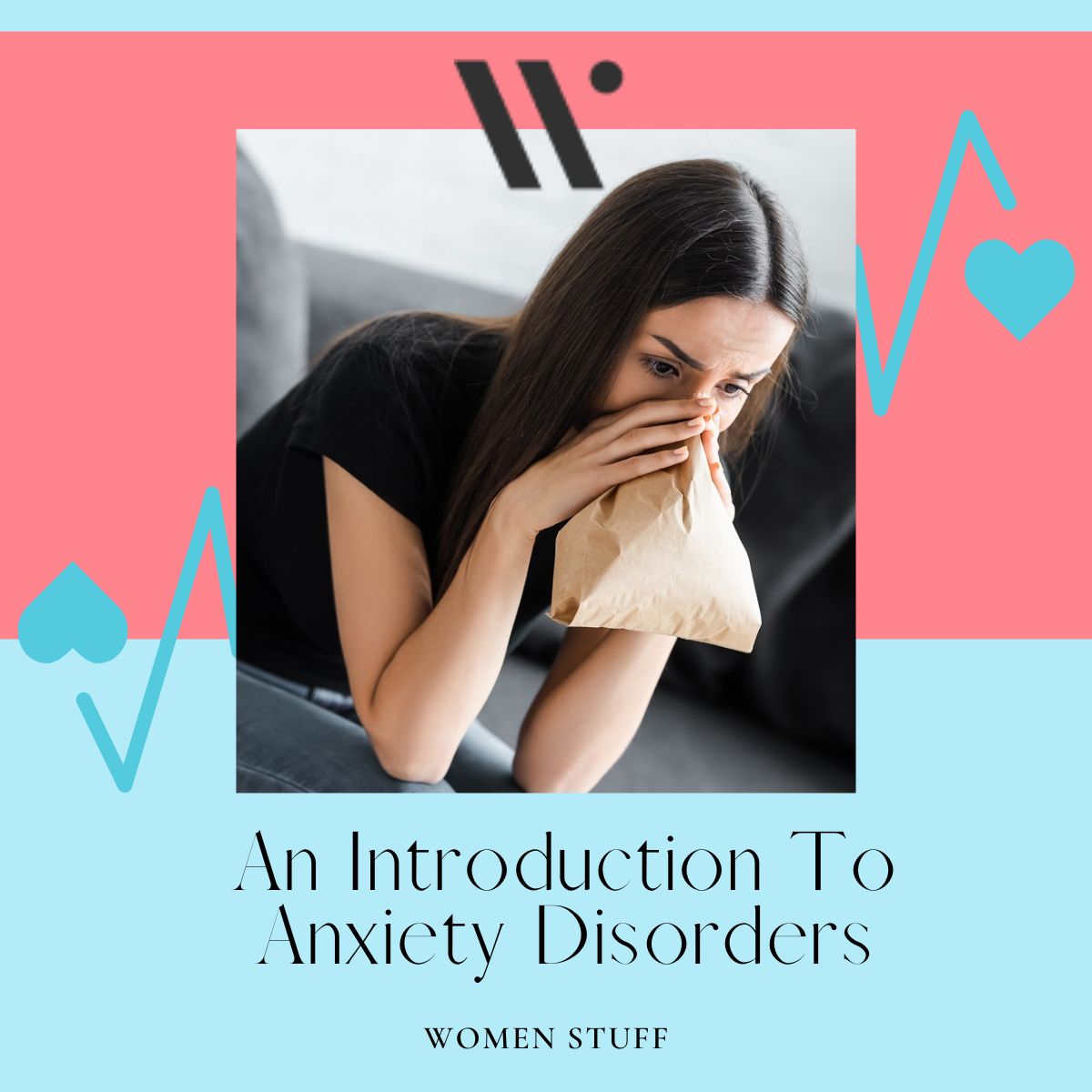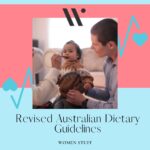
An Introduction To Anxiety Disorders
When confronted with danger, threat or fear, anxiety is a normal emotion that everyone experiences. It is a protective mechanism we have to protect ourselves from danger or threat. This is all very well when we are actually under real danger or threat. However, for many people, they perceive everyday situations as being potentially dangerous or threatening, when it is not warranted, and therefore, experience very high levels of anxiety. Over time, these high levels of anxiety can lead to the development of an Anxiety Disorder, panic attacks, phobias, and many other conditions such as depression, physical health problems, eating disorders, drug and alcohol dependency and sometimes suicide. The impact an Anxiety Disorder has on the individual is devastating and disruptive to the personal, emotional, social, physical and occupational area’s of their life. The cost to the community is also exorbitant.
For more information about each Anxiety Disorder scroll down.
- Panic Disorder
- Agoraphobia
- Specific Phobia’s
- Social Anxiety Disorder
- Generalised Anxiety Disorder
- Obsessive Compulsive Disorder
- Post Traumatic Stress Disorder
Anxiety Disorders are treatable. Today, there is more information, understanding and assistance available to overcome an Anxiety Disorder and return to living a life free from unwarranted anxiety and fear. The Anxiety & Stress Management Service of Australia can assist you in this process.
Panic Disorder
Panic Disorder develops when a person experiences panic attacks in situations where most people would usually not be afraid. Panic disorder develops when the normal anxiety response that occurs in response to danger, fear or threat is not working properly. In Panic Disorder, there does not need to be any trigger to set off the panic/anxiety reaction. Panic attacks can occur out of the blue, anywhere, at any time as people are going about their daily lives.
Symptoms of Panic Attack
- Feelings of unreality
- Breathing difficulties
- Hot and cold flashes
- Heart palpitations
- Nausea Chest pains
- Shortness of breath
- Tingling sensations
- Fear of dying, losing control
- Trembling, weakness
- Sweating Feelings of choking
- Dizziness Feeling of ‘going crazy’
People with Panic Disorder can often experience these panic attacks several times a day. As a result, Panic Disorder has a major debilitating impact on all areas of a person’s life.
Panic Disorder Treatment
Recovery from Panic Disorder is possible. Treatment and therapies helpful in overcoming Panic Disorder include cognitive behavioural therapy, anxiety education, relaxation and correct breathing techniques, focusing skills, exposure therapy, perception skills, balanced lifestyle and often medication. If you use medication it is advised to engage in the above therapies as well, and medication should only be used under the direction of a qualified medical practitioner.
Specific Phobia
Specific phobias generally involve a strong fear and avoidance of one particular type of object or situation. It is important to be aware that in specific phobias there are no spontaneous panic attacks, and there is no fear of panic attacks, as in the anxiety disorder, Agoraphobia. There is also no fear of negative evaluation as in Social Anxiety Disorder. In Specific Phobias, the fear and avoidance of one particular type of object or situation is strong enough to impact on day to day life, personal relationships and occupational goals, causing considerable distress.
Common Specific Phobias
- Animal Phobias Fear and avoidance of snakes bats, rats, spiders, bees, dogs, and other creatures.
- Acrophobia Fear of heights
- Elevator Phobia Fear that the cables will break, or get stuck
- Airplane Phobia Fear that the plane will crash or depressurise
- Doctor or Dentist Phobia Fear of anything to do with doctors or dentists
- Phobias of Thunder and Lightning Usually begins in childhood
- Blood Injury Phobia Tend to faint rather than panic
- Illness Phobia Fear of contracting or succumbing to a specific illness, such as a heart attack or cancer. Require constant reassurance from doctors
Treatment for Specific Phobias
Recovery from Specific Phobias is possible. Treatment and therapies helpful in overcoming Specific Phobias include cognitive behavioural therapy, anxiety education, relaxation and correct breathing techniques, focusing skills, exposure therapy, perception skills, balanced lifestyle and often medication. If you use medication it is advised to engage in the above therapies as well, and medication should only be used under the direction of a qualified medical practitioner.
Generalised Anxiety Disorder
Generalised Anxiety Disorder is when a person worries continuously about particular areas of their life. Most of the concerns and worries are often repetitive, ongoing, extreme and in most cases, out of proportion to the actual situation. Some of these worries include such things as relationships, work, their health or their family’s health, and finances. As a result of this worry, the person experiences very high levels of anxiety on a regular basis.
Symptoms of Generalised Anxiety Disorder
- Feelings of unreality Breathing difficulties
- Hot and cold flushes Heart palpitations
- Nausea Chest pains
- Shortness of breath Tingling sensations
- Fear of dying, losing control Trembling, weakness
- Sweating Feelings of choking
- Dizziness Feeling of ‘going crazy’
- Irritability and agitation Difficulties sleeping
Coping Patterns
Many people develop very poor coping mechanisms in an attempt to decrease their high levels of anxiety brought about by their constant and endless worry. Some common coping mechanisms include smoking cigarettes, drinking coffee, using recreational drugs and alcohol. These unhealthy coping mechanisms often exacerbate their already high levels of anxiety.
Generalised Anxiety Disorder Treatment
Recovery from Generalised Anxiety Disorder is possible. Treatment and therapies helpful in overcoming Generalised Anxiety Disorder include relaxation and correct breathing techniques, problem-solving techniques, cognitive behavioural therapy, anxiety education, self-esteem therapy, focusing skills, assertion skills training, perception skills, balanced lifestyle and often medication. If you use medication it is advised to engage in the above therapies as well, and medication should only be used under the direction of a qualified medical practitioner.
Post Traumatic Stress Disorder
Post Traumatic Stress Disorder is severe psychological trauma following a traumatic event. The symptoms cause much distress to the persons life. Traumas that result in Post Traumatic Stress Disorder are generally anything considered outside the normal range of human experience which result in intense fear, terror and feelings of helplessness. Some of these traumas include natural disasters such as earthquakes or tornadoes, violent crimes against yourself or your immediate family, physical, sexual or emotional assault and abuse, motor vehicle accidents and plane crashes.
Common symptoms and behaviours
- Repetitive, distressing thoughts about the event
- Nightmares and flashbacks
- Persistent symptoms of increased anxiety, irritability, anger, difficulty concentrating
- Avoidance or activities or external situation associated with the trauma
- Emotional numbness and detachment
Treatment
Recovery from Post Traumatic Stress Disorder is possible. Treatment and therapies helpful in overcoming Post Traumatic Stress Disorder include support and understanding, counselling, cognitive behavioural therapy, anxiety education, relaxation and correct breathing techniques, focusing skills, exposure therapy, perception skills, balanced lifestyle and often medication. If you use medication it is advised to engage in the above therapies as well, and medication should only be used under the direction of a qualified medical practitioner.
Agoraphobia
Agoraphobia develops from a fear of being in a situation from which you believe escape is impossible or in which you believe there will be no one to assist you if you experience a panic attack or panic-like symptoms. This fear results in severe physical symptoms of anxiety and panic attacks which are extremely uncomfortable.
Agoraphobia usually develops in the following manner. First, a person may have a panic attack (this can occur for any number of reasons, including prolonged stress, perception of immense fear, change of lifestyle, relocation, pressure at work, family commitments etc). The person will then start to develop a fear that the panic attack may happen again. Situations in which the initial panic attack occurred are then anticipated with dread, or avoided altogether. Over time, the situation in which the first panic attack occurred, can become very generalised to the point where a person starts to fear many more situations and eventually cannot leave their own home. Common situations feared in Agoraphobia include shopping centres, airports, railway stations, closed places such as public transport, churches, theatres, and even quiet places.
From the first panic attack, agoraphobia can develop quickly or over many years and can move from mild phobic anxiety to an inability to enter any public situation.
Symptoms of Agoraphobia
- All the symptoms of anxiety and panic attacks
- Feelings of depression
- Fear of loss of control
- Other phobias
- Loss of self-esteem and self-confidence
- Frustration and anger
- Confusion
The physical symptoms of anxiety and panic attacks may include
- Feeling of lightheadedness
- Feeling of being detached or distant from surroundings or even from one’s own body
- Buzzing in the ears, blurred vision, a dry mouth, tingling in the face and arms
- Difficulty in breathing – perhaps breathlessness without apparent cause
- Sudden feeling of extreme panic
- Heart palpitations
- Indigestion
- Dizziness
- Backache without apparent cause
- Headaches and other muscle aches and pains
- Weakness of the legs
- Sweating
- Nausea
- Shaking hands
- Fear of fainting
- Fear of heart attack
Treatment
Recovery from Agoraphobia is possible. Treatment and therapies helpful in overcoming Agoraphobia include cognitive behavioural therapy, anxiety education, self-esteem therapy, relaxation and correct breathing techniques, focusing skills, exposure therapy, assertion skills training, perception skills, balanced lifestyle and often medication. If you use medication it is advised to engage in the above therapies as well, and medication should only be used under the direction of a qualified medical practitioner.
Obsessive Compulsive Disorder
Obsessive Compulsive Disorder is often triggered by trauma or stress and usually begins during adolescence or early adulthood. The main feature of Obsessive Compulsive Disorder is persistent, intrusive and unwanted thoughts or obsessions that the person finds difficult to control. Some of these intrusive thoughts can include such things as images of violence to someone else, fears of leaving the door or windows unlocked and fears of leaving on lights or electrical products.
Many people with Obsessive Compulsive Disorder also experience persistent and uncontrollable compulsions or urges to perform certain behaviours. These compulsions are often performed to dispel the anxiety brought on by the obsessions. For example, checking the stove and other electrical appliances, again and again, to see if you have turned them off, or continuously washing hands or taking showers to dispel the fear of contamination.
Both obsessions and compulsions result in high levels of anxiety. The anxiety comes from the inner conflict between your wish to be free of the compulsive rituals and/or obsessive thoughts and the irresistible desire to perform or think about them.
People who have Obsessive Compulsive Disorder will often spend many hours tidying, checking, cleaning and ordering things to the point where these activities have a major impact on all areas of their life
- Most common obsessions… Causing harm to someone they are close to
- Most common compulsions.. Washing, checking and counting
Treatment
Recovery from Obsessive Compulsive Disorder is possible. Treatment and therapies helpful in overcoming Obsessive Compulsive Disorder include cognitive behavioural therapy, anxiety education, relaxation and correct breathing techniques, focusing skills, exposure therapy, perception skills, a balanced lifestyle and often medication. If you use medication it is advised to engage in the above therapies as well, and medication should only be used under the direction of a qualified medical practitioner.
Social Anxiety Disorder
Social Anxiety Disorder is a fear of being embarrassed, judged or evaluated negatively in social situations. Because of this fear, the person with Social Anxiety Disorder experiences physical symptoms of anxiety, and as a result, tends to avoid the social interaction or social situation that brings on the symptoms of anxiety.
The level of anxiety experienced by a person with Social Anxiety Disorder is excessive, and results in substantial impairment in the person’s social, emotional, interpersonal and occupational life.
There are two different major subtypes of Social Anxiety Disorder, generalised and specific. Generalised Social Anxiety Disorder is when the person fears a wide range of different social situations. Specific Social Anxiety Disorder is when the person fears only one specific social situation, such as public speaking, or only a couple of specific social situations
Who develops Social Anxiety Disorder?
Social Anxiety Disorder is equally common in men and women and is found across all cultures. The World Psychiatric Association estimates that 3 per cent of the population suffer from this condition at any one time. Other studies suggest the figure to be as high as 8 – 15%, or 1in 7 people.
Characteristically, Social Anxiety Disorder develops in the mid-teenage years. The World Psychiatric Association suggests that approximately 40 percent of people with Social Anxiety Disorder will develop the condition prior to the age of ten, and approximately 95 per cent will develop the condition before the age of twenty.
If left untreated, Social Anxiety Disorder can add to the onset of other developmental problems, and other conditions such as depression, eating disorders, avoidant personality disorder, drug and alcohol abuse, and sometimes suicide
Common Situations Feared
- Speaking in public
- Meeting or talking with people in positions of authority
- Eating and drinking in public
- Meeting or talking to members of the opposite sex
- Writing in front of others
- Being watched doing something
- Meeting new people
- Being teased
- Being the centre of attention
- Being criticised
Main Symptoms of Social Anxiety Disorder
When the person who has Social Anxiety Disorder is confronted by the feared situation, or even just thinks about the feared situation, extreme symptoms of anxiety result. The symptoms of Social Anxiety Disorder include any, or all of the following:
- High levels of anxiety when exposed to the feared situation (palpitations, trembling, sweating, tense muscles, dry throat, blushing, dizziness, sinking feeling in the stomach)
- An overwhelming feeling of wanting to escape
- Feelings of self consciousness and inadequacy
- Avoidance of the feared situation, which can often lead to isolation from friends, family and society
- Reliance on drugs or alcohol to get the person through the feared situation
- A common misconception amongst some of the medical profession and the general public is that Social Anxiety Disorder is the same as shyness. It is important to clarify here that shyness and Social Anxiety Disorder are different. Shyness is a normal characteristic. Social Anxiety
- Disorder is a recognised medical condition, included in the Diagnostic and Statistic Manual in 1980. Since this time, diagnostic criteria has been widely improved, allowing for correct diagnosis of Social Anxiety Disorder and more appropriate treatment options to be put in place.
Can Social Anxiety Disorder be treated?
The World Psychiatric Association suggests that, yes, Social Anxiety Disorder responds well to treatment.
Cognitive therapy, behavioural therapy and graded exposure therapy are seen to be effective psychological approaches to the treatment of Social Anxiety Disorder. These therapies encourage people who experience Social Anxiety Disorder to think more rationally and confront the feared situations, with the overall benefit of decreasing levels of anxiety.
Other techniques useful in treatment of Social Anxiety Disorder include, self esteem therapy, relaxation techniques, correct breathing techniques, assertion and perception training, social skills training, physical exercise, nutrition, meditation, and focusing skills.
The World Psychiatric Association suggests that as few as 25 per cent of people who have Social Anxiety Disorder currently receive treatment. Treatment options need to be introduced as soon as a diagnosis is made to alleviate the impairment to the sufferer’s life, and to prevent the further development of other related conditions such as depression, avoidant personality disorder, eating disorders and drug and alcohol abuse.





